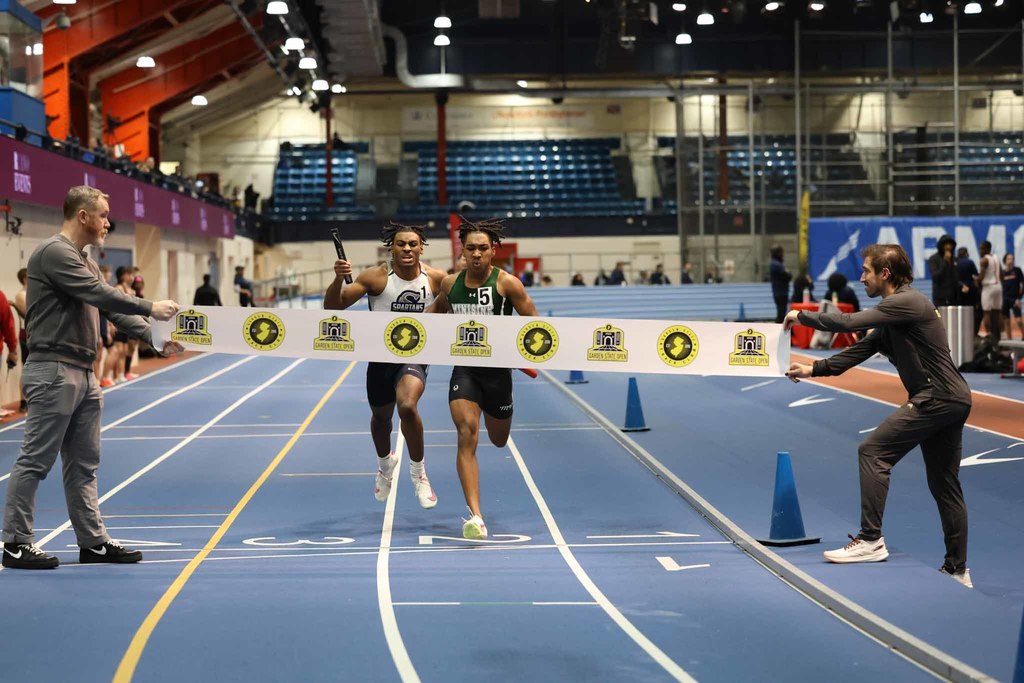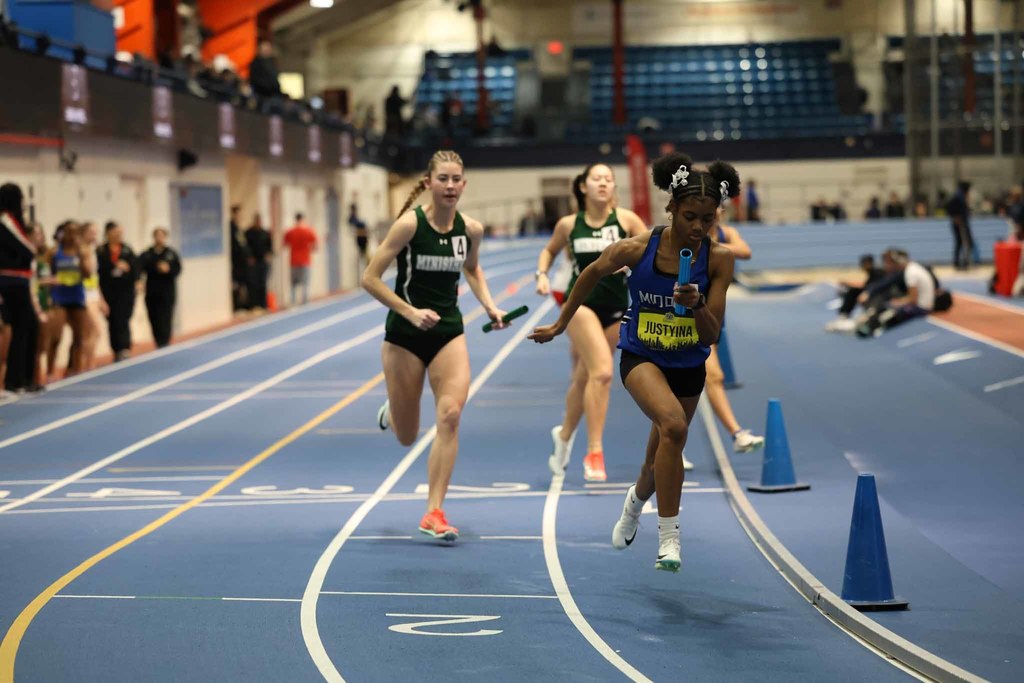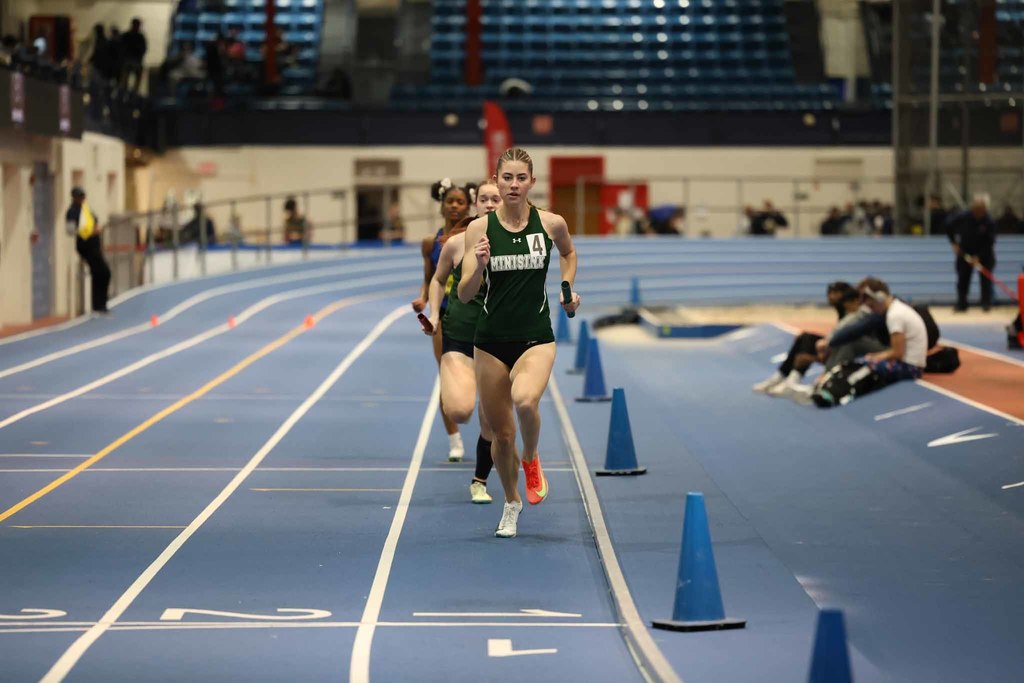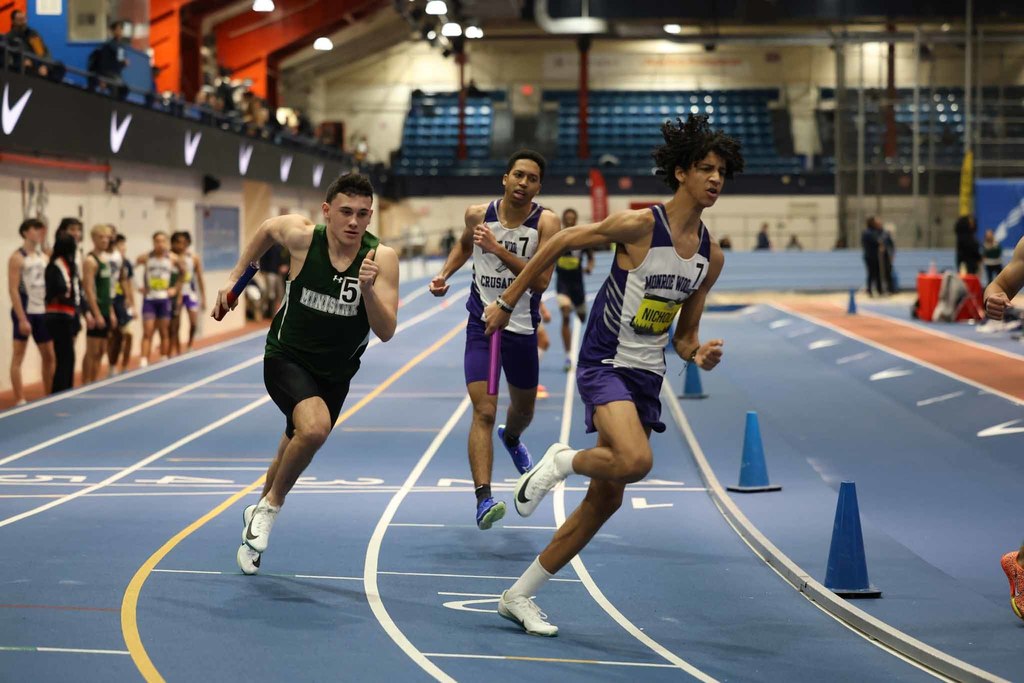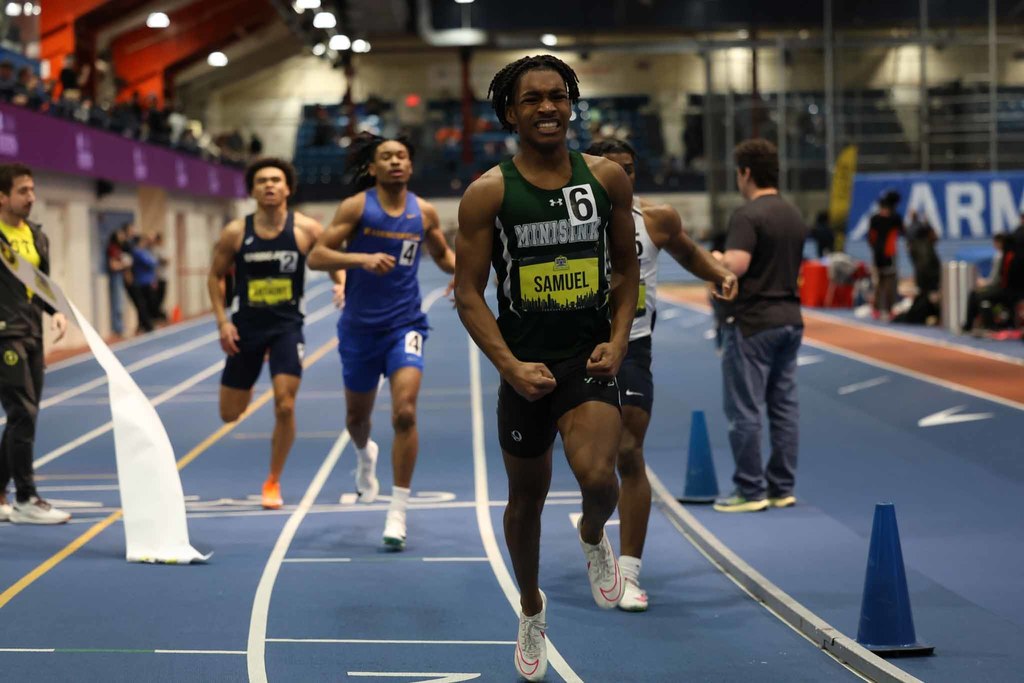What’s a great way to learn about fractions? With PIZZA, of course!
Jenna Colman’s and Victoria Frascone's Otisville fourth-graders’ recent fraction unit work included a fun activity which combined art and the favorite food of many in the class! They made fraction pizzas!
First, students determined whether their pizzas would be separated into slices representing fourths, fifths, sixths, or eighths. Then, they chose their toppings: Peppers, mushrooms, pepperoni, or tomatoes. Students were tasked with choosing at least two toppings.
After, they answered questions about the fractions of the slices and toppings on their pizzas!
When teaching fractions with "fraction pizzas," the total slices and numbers of toppings act as a visual representation of fractional parts, allowing students to easily understand how a whole pizza can be divided into equal slices, where each slice represents a fraction of the whole, and different toppings on various slices represent different fractional amounts of a specific topping on the pizza.
Fractions a fundamental concept in mathematics, essential for understanding more advanced math like algebra, and are crucial for everyday life situations where parts of a whole need to be measured or calculated, like cooking, measuring, or interpreting data. They are a critical building block for mathematical reasoning and problem-solving skills.

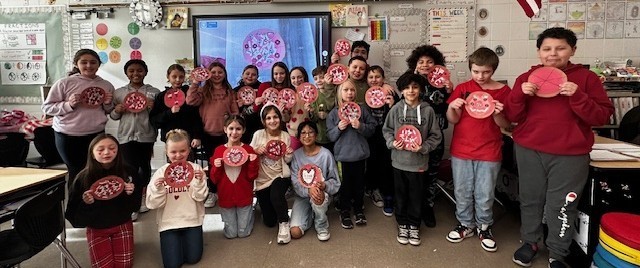



Even the district’s transitional kindergarteners get introduced to what an acronym means! In this instance, Marjori Bobish’s ES transitional kindergarteners learned that someone who has performed better than anyone else, especially in sports, can be considered the “Greatest of All Time!” If you take the first letter of each of those words, you can simplify that phrase by saying “GOAT!”
Mrs. Bobish and her students talked about why gymnast Simone Biles is a “GOAT” as they read their Scholastic readers together, learning about the important attributes of a GOAT!
The term "GOAT" is believed to have originated in hip-hop music in the 1990s and was popularized by rapper and actor LL Cool J.




MORE BOOK FAIR FUN! Take a peek at the Intermediate School's Scholastic Book Fair! Thank you to the IS PTO for organizing and overseeing the day. '
Remember, regular reading further develops critical thinking skills, expands vocabulary, improves comprehension, strengthens analytical abilities, and lays the foundation for success in all academic subjects by allowing students to access and process information effectively across different disciplines.




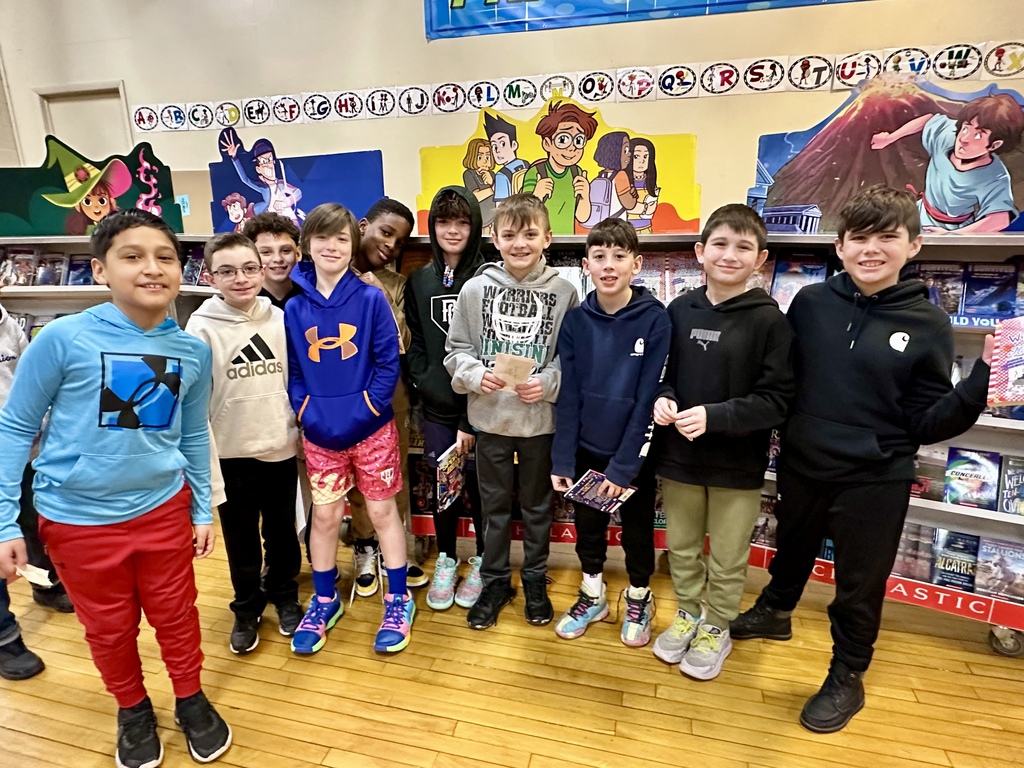

Congratulations to the district’s Odyssey of the Mind teams, who creatively, confidently and joyfully represented the district at this past weekend’s New York State Odyssey of the Mind Region 5 competition at Orange-Ulster BOCES in Goshen!
Here’s how they fared:
•High School/Division III
--- Fourth-place for “AstronOMical Odyssey!” with 253.38 points out of 350!
•Middle School/Division II
--- Third place for “The OM-Mazing Race” with 313.20 points out of 350!
•Otisville Elementary/Division I
--- Seventh-place for “AstronOMical Odyssey! “with 295.36 points out of 350!
While the teams do not advance to the next round of competition, they are all winners for their dedication and commitment to this very unique and imaginative competition! Please join us in congratulating them for their accomplishments!
Odyssey of the Mind is an international educational program that provides creative problem-solving opportunities for students from kindergarten through college. The Odyssey of the Mind program

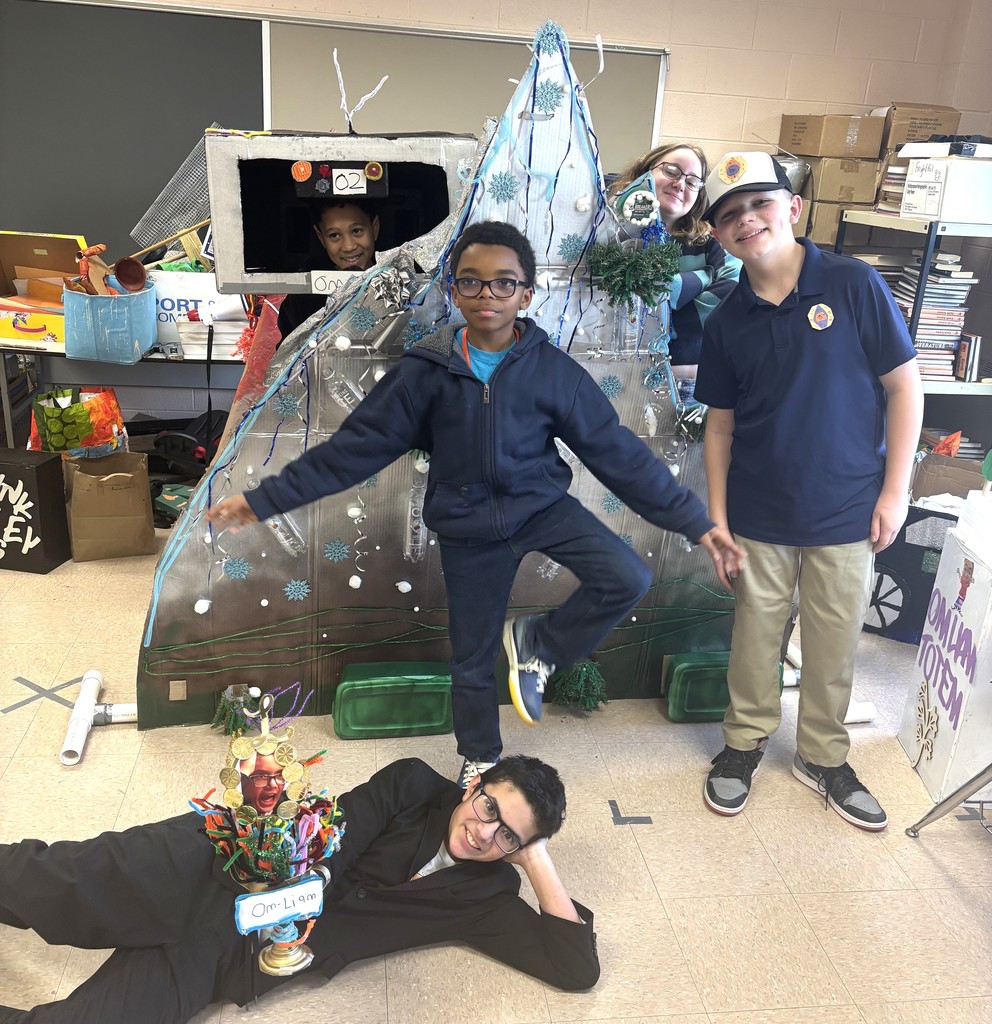
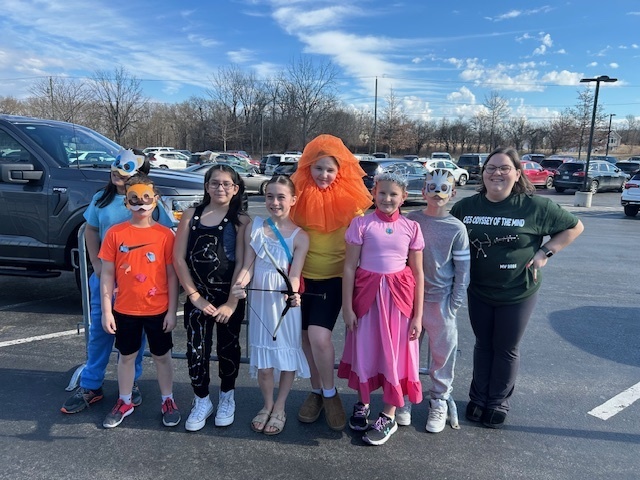
Learning how to alphabetize words is important because it helps develop a foundational understanding of sequence and order! Tracey Salinardi’s ES second-graders, like all district second-graders, practice this important skill on a regular basis. Students recently took a list of self-generated random words and then practiced alphabetizing them…. sometimes they needed to go to the third letter in a word to make sure it was alphabetized correctly!
Understanding alphabetical order is crucial for accessing information in dictionaries, encyclopedias, libraries, and other reference materials, making it a key fundamental skill for reading, research, and organization in everyday life Students quickly learn that alphabetizing words allows them to quickly locate specific information by recognizing patterns in the alphabet.
The practice of alphabetizing words originated in ancient times, with the earliest evidence found in Northwest Semitic scribes using the abjad system during the first millennium BCE. Historians note the most notable early example was the library catalog called "Pinakes," created by scholar Callimachus at the Great Library of Alexandria, where scrolls were likely arranged alphabetically by the first letter of the author's name, marking one of the first effective uses of alphabetical order as a cataloging method.




Brendan McGann’s College Forensic Science and High School elective students recently completed studying bloodstain pattern analysis (BPA). What a bloody mess! Take a look!
In this lab, students recreated actions that cause various bloodshed. They were then asked to interpret bloodstain patterns from various scenarios.
Bloodstain pattern analysis (BPA) is a forensic science technique that examines bloodstains at a crime scene to recreate events. It's used to reconstruct crimes like homicides, types of batteries, burglaries, and hit-and-run accidents.
BPA uses principles of biology, physics and math to help investigators solve crimes. In a forensic science class, students learn how to interpret bloodstain patterns to answer questions about a crime. They also learn how blood behaves when it leaves the body, including how it follows gravity and surface tension. Additionally, students learn how to categorize bloodstains into types like gunshot spatter, cast-off, and arterial spray.
DID YOU KNOW
• BPA helps investigators determine the nature of the force used in the attack.
• It helps determine the type of injuries sustained by the victim.
• It helps determine how long ago the crime occurred.
• It helps determine whether the victim died immediately or after some time.
• It helps determine the position of the victim and the perpetrator.








Congratulations to Juniors Sigourney-Page Kinzonzi and Siyassa Mathis, who were nominated by their teachers and recognized and honored by the Town of Wallkill on Feb. 27 as part of the town’s Black History Month recognition events. Both were recognized for their demonstrated leadership, academic achievements, diversity and social values in the greater Minisink Valley community.

In recognition of National Chili Day (Feb. 27) Victoria Ingrassia’s sixth-grade FACS students prepared beef and bean chili from scratch. Today…they ate it! Sorry, there’s no leftovers. But, they’re happy to share the recipe! And parents, these kids definitely do know how to clean up in the kitchen!
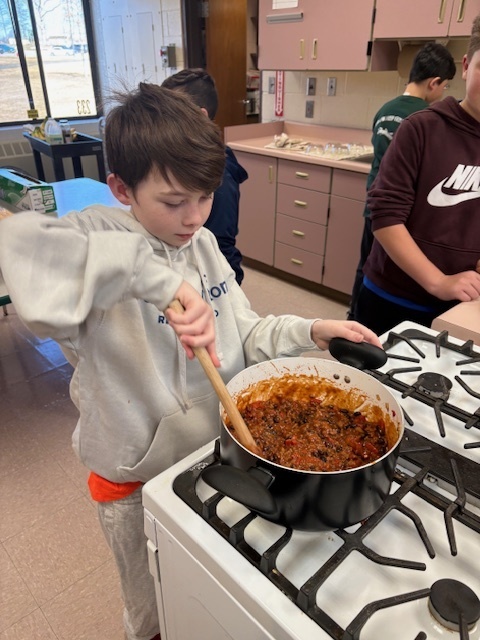

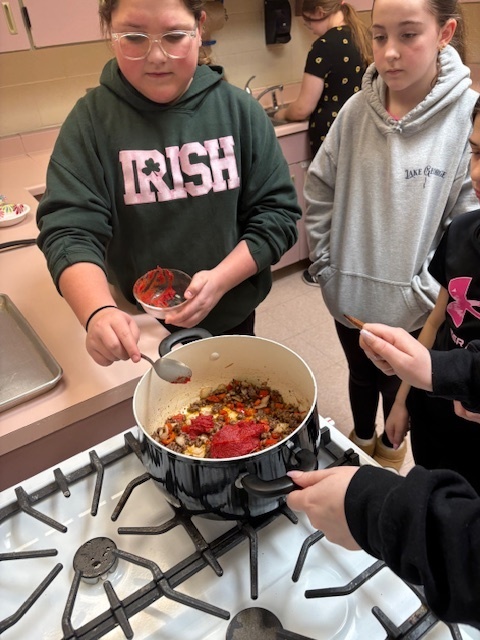



WHAT A GREAT EXAMPLE OF INTER-SCHOOL COOPERATION!
Kudos to the students in Christopher Tuthill’s High School “Architecture” class for their design and build of a terrific platform for the Otisville Elementary Drama Club! Thank you to all involved!
Short-term, these elementary students will be using it in their upcoming performances of Willy Wonka KIDS! Be sure you mark your calendars for their March 4 and 5 performances at 6:30 p.m. in the Otisville cafetorium. Admission is free!



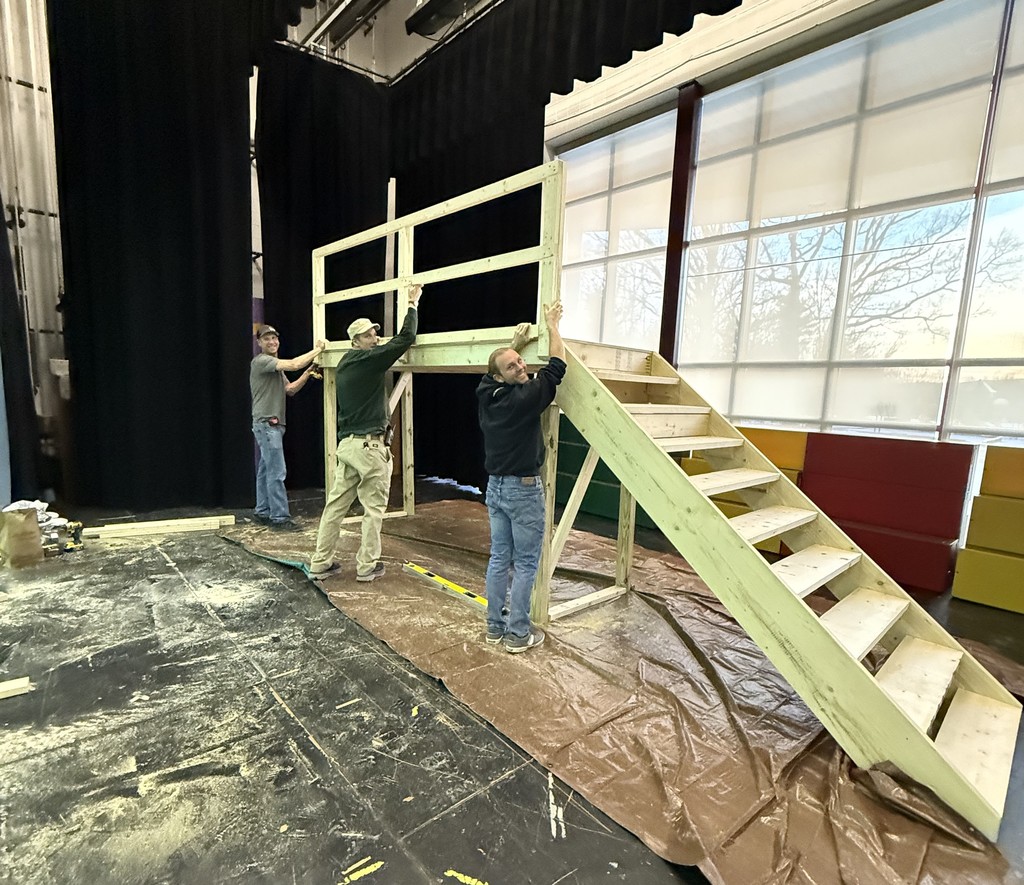
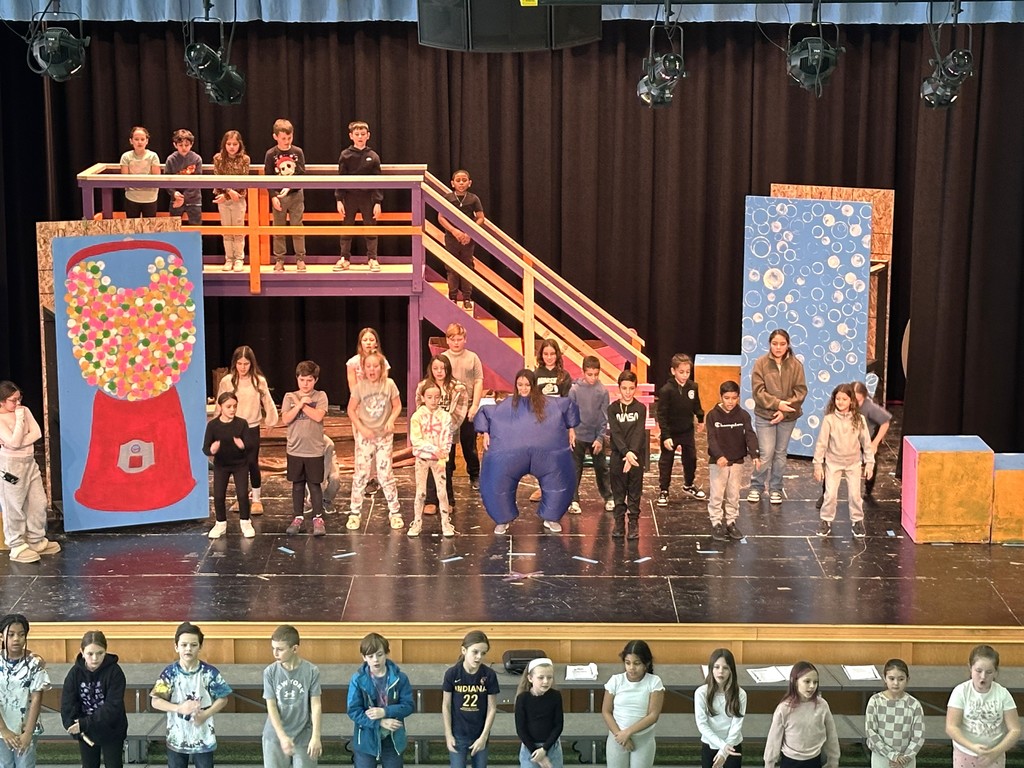
Joan Giardina’s IS third-grade art students are studying and applying the surreal elongation and simplified painting style of Italian painter (and sculptor) Amedeo Modigliani in their self-portrait assignment!
Modigliani’s elongation of faces, necks and figures in his works were not received well during his lifetime, but later became much sought-after his passing. Take a look; her students have really captured his style in their own self-portraiture!





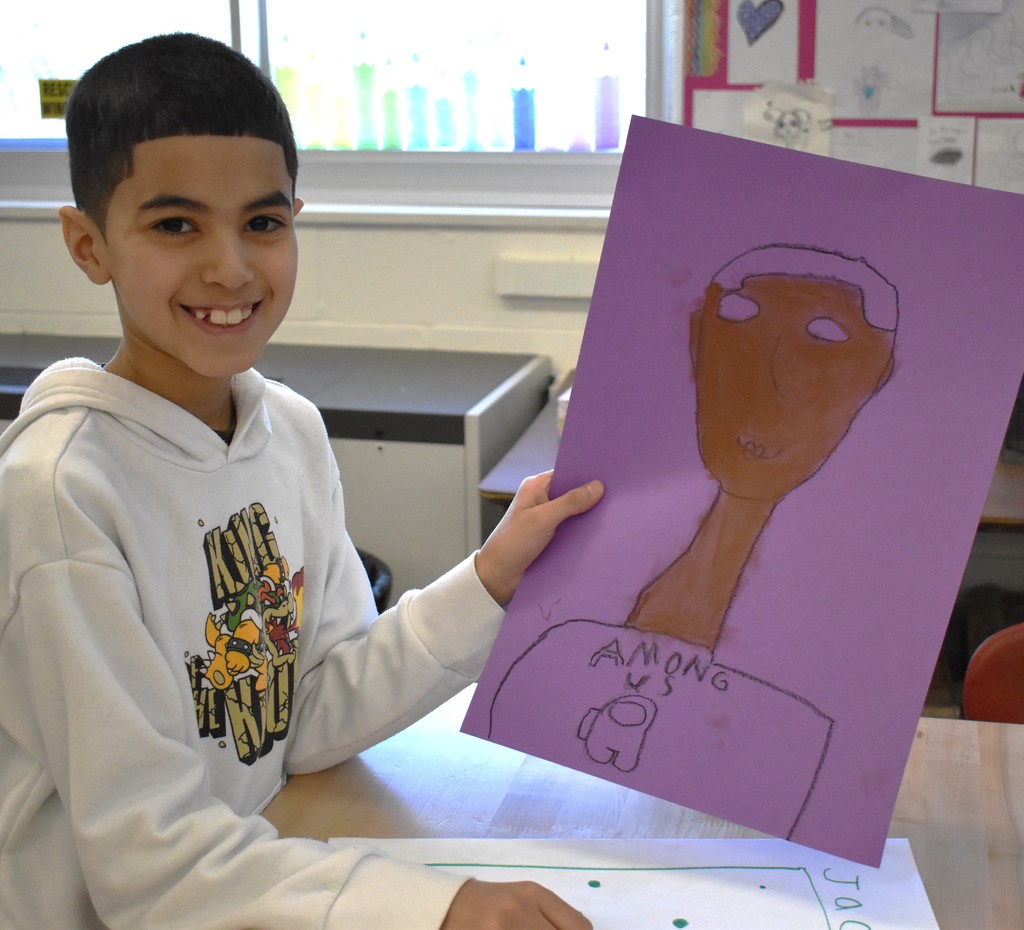
TYING REAL LIFE ADVENTURES CLASSROOM LEARNING
District fourth-graders, like Emma Grunenberg’s IS fourth-graders, are beginning their new CKLA unit about geology.
To introduce her students to this topic. Ms. Grunenberg shared photos of her recent trip to Iceland, where she had a chance to visit an Icelandic tectonic plate called “Bridge Between Continents.” This bridge connects the North American plate and the Eurasian Plate! Not too many people get to visit and stand in the middle of a tectonic plate’s cracks, but Ms. Grunenberg did!
After looking at the photos, students began their first read of chapter one using the CLOZE reading strategy.
•The Bridge between Continents (or Miðlína) is a 50-foot footbridge in the Reykjanes Peninsula spanning a gaping rift between the Eurasian and North American tectonic plates. It allows people to walk from North American to Europe in a matter of seconds! The lava-scarred Reykjanes Peninsula lies directly on the Mid Atlantic Ridge. These major tectonic plates drift apart by the Earth’s forces, a few centimeters each year.
•Tectonic plates are large, solid slabs of rock that make up the Earth's crust and move slowly on top of the mantle. The movement of these plates causes earthquakes, volcanic eruptions and the formation of mountains.
•CLOZE reading is a teaching strategy that involves removing words from a passage and having students fill them in using context clues. It's used to help students learn vocabulary, grammar, and reading comprehension.
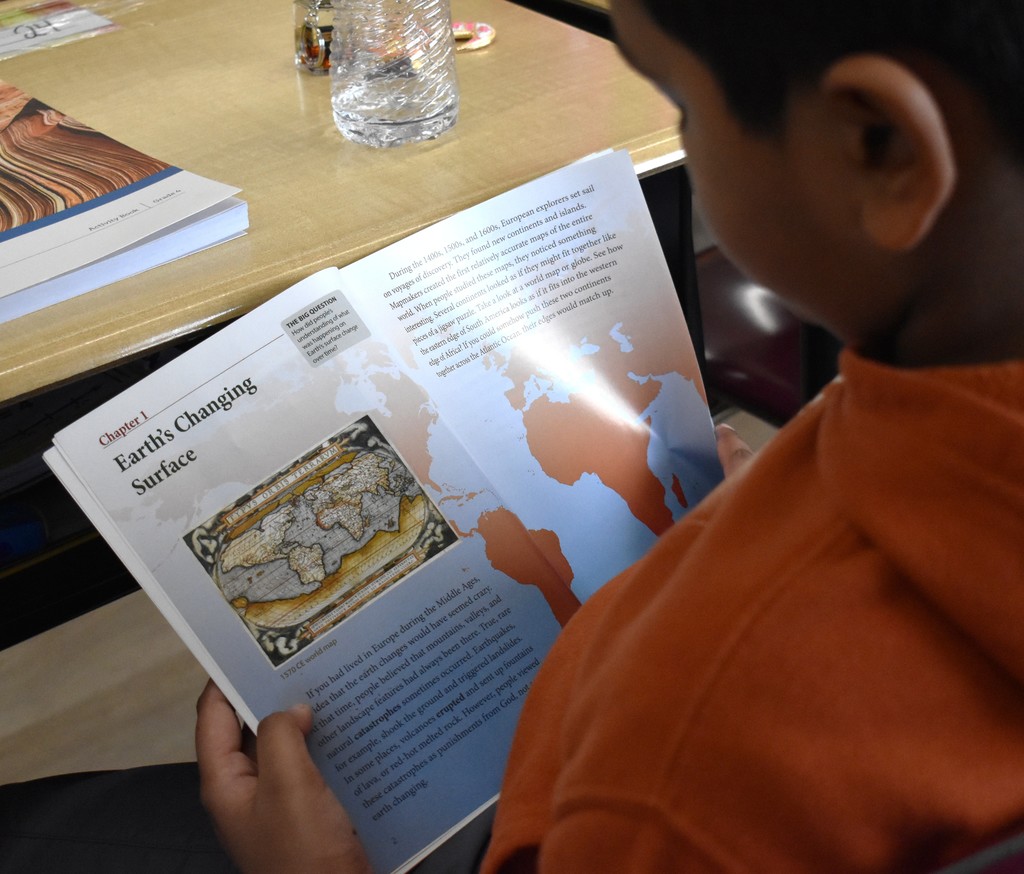


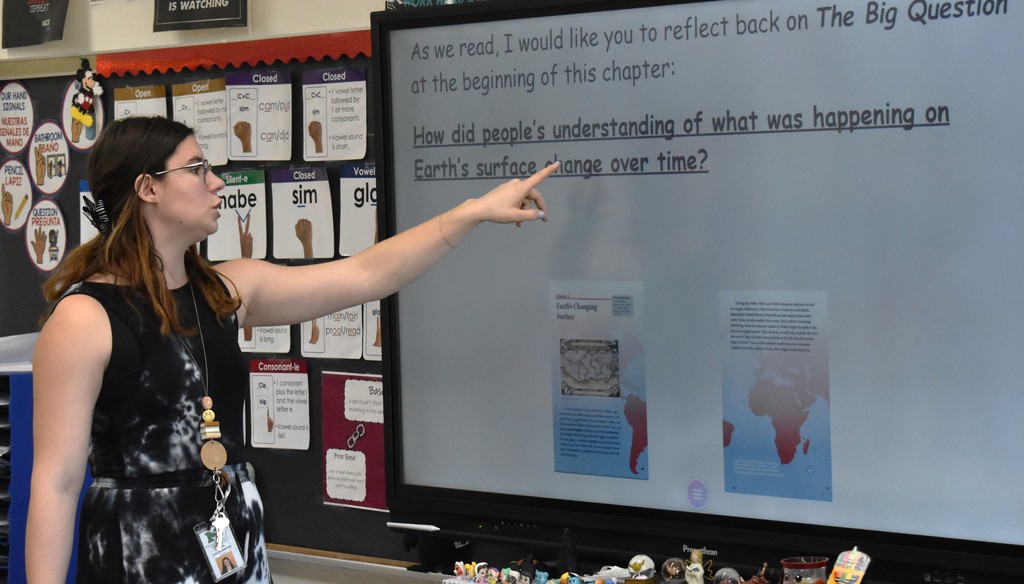
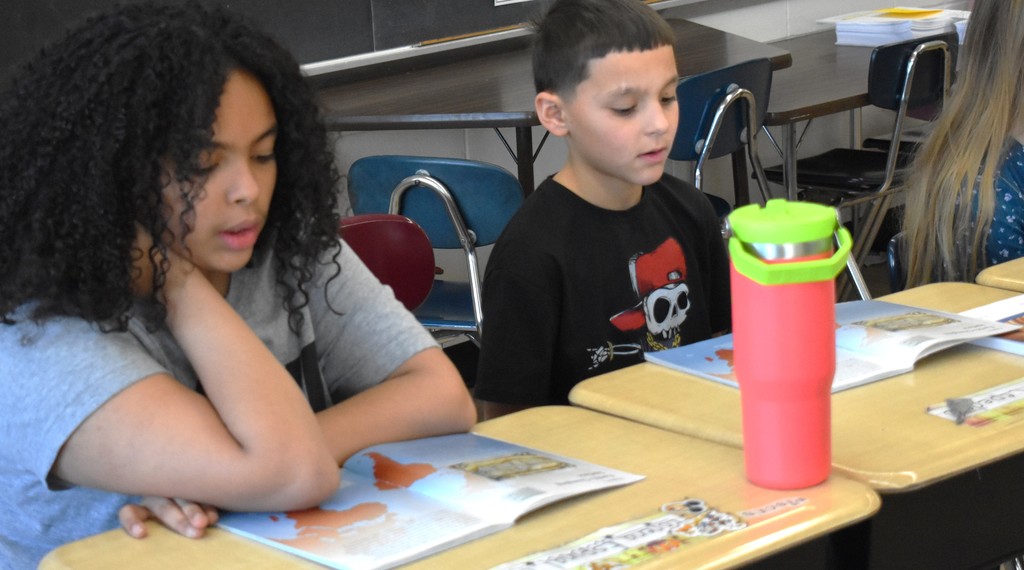
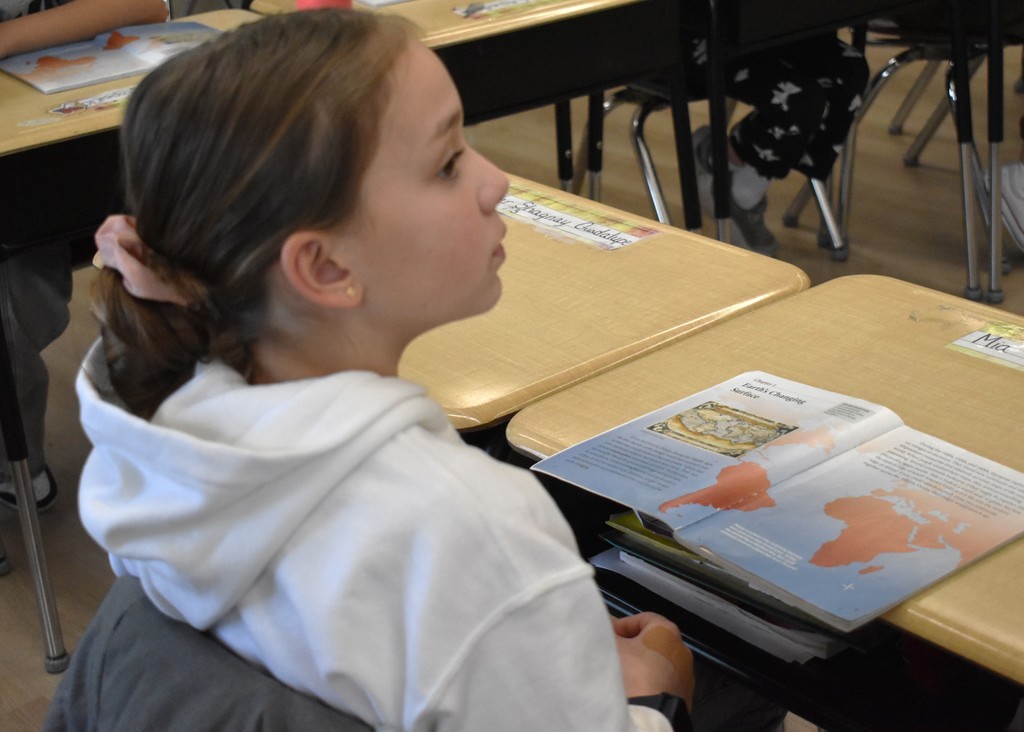
The Boys Varsity Basketball Team honored its seniors for their dedication and commitment to the team at the team's recent Senior Recognition Night!
Congratulations and best wishes to: Max Earl, Nashaun Green, Angel Rodriguez, Nick Hughes, Jeremiah Phanor, Ian Tanous, Nik Marrero, Jaiden Calcano and Dominic Marasco!

Take a peek at the recent ES Scholastic Book Fair! We bet a lot of students have some great books to read at home! Thank you to the ES PTO for organizing and overseeing this wonderful event!
Book fairs are a fun and engaging way to introduce young children to a wide variety of books, allowing them to choose titles that spark their interest, which can foster a lifelong love of reading while giving them the power to select their own books! Book fairs can help build excitement around reading within the classroom and at home, encouraging family engagement with books. See more photos on the district's Facebook page: https://www.facebook.com/MinisinkValleyCSD




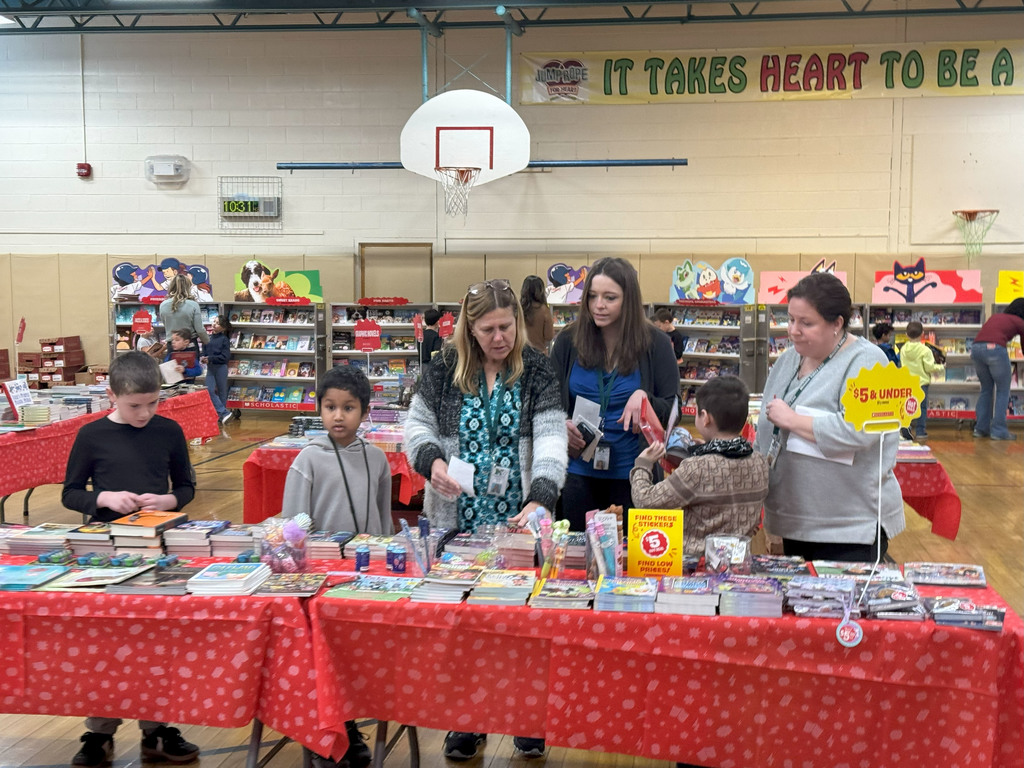


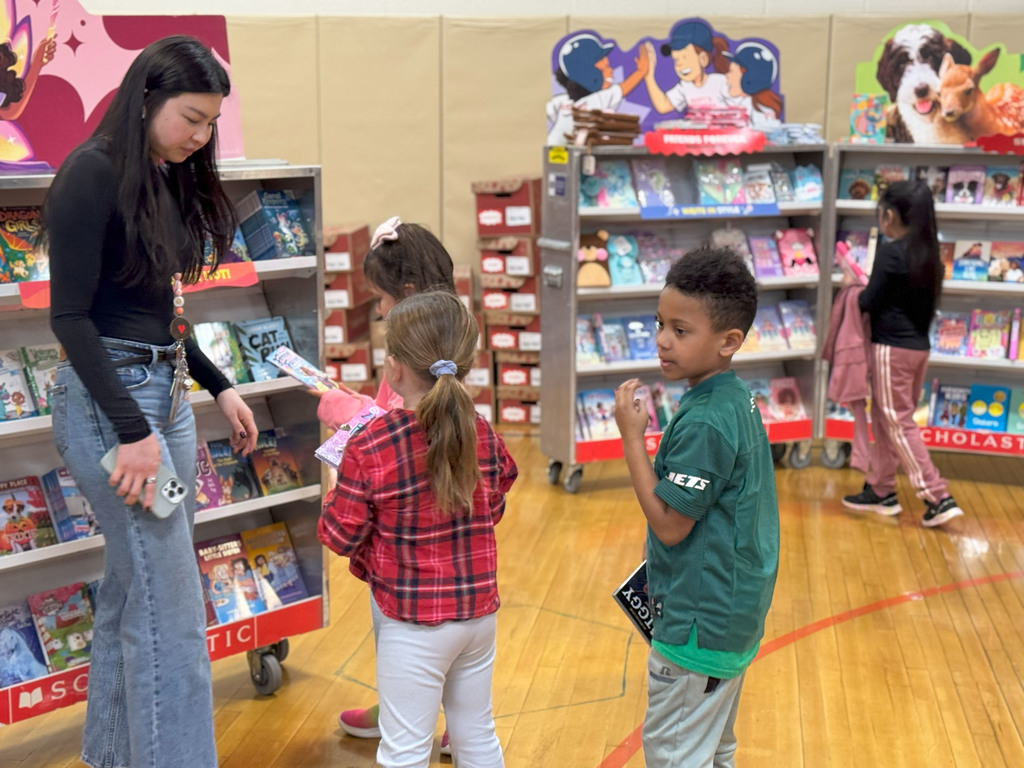
And....they're off!
Thank you to everyone who took part in this afternoon’s CLAP OUT to wish our eight wrestlers competing in the inaugural NYSPHSAA Girls Wrestling Championship good luck, best wishes and much success at tomorrow’s tournament!
You got this, ladies, and we’re thrilled you’re representing Minisink Valley in this first-ever girls wrestling championship tournament! We're rooting for you! Please share your good wishes below!





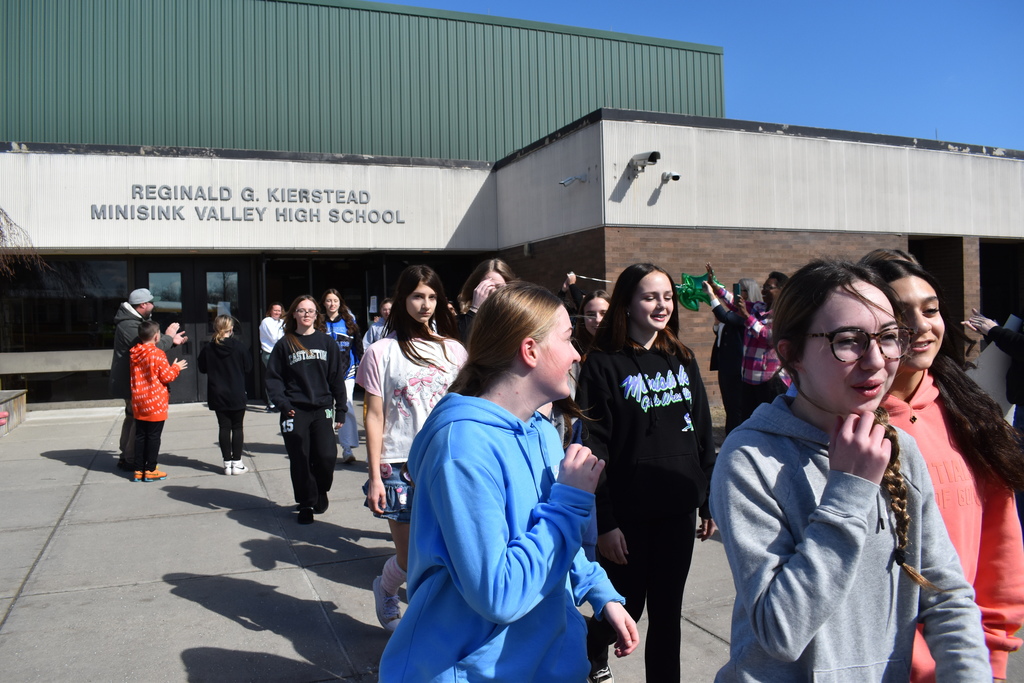
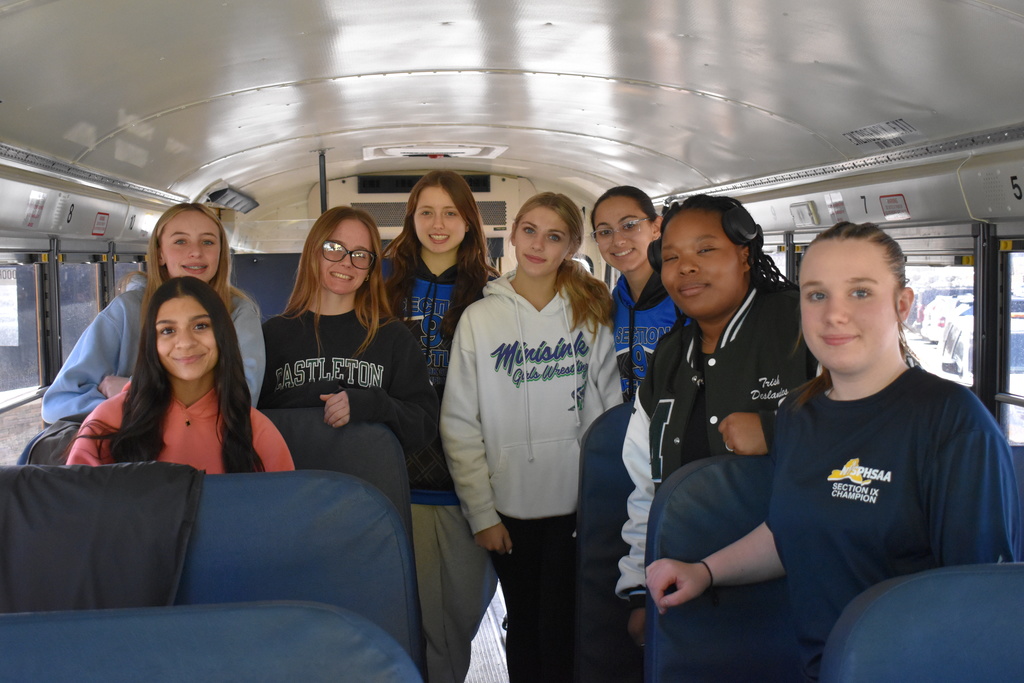
Kara Welsh’s Otisville fourth-grade art students a
re mastering the concepts of foreground, midground and background in their artwork!
In this recent assignment, students were tasked with creating a piece of art that represents their understanding of these elements. Take a peek at their creative work!
In elementary art class, students learn about foreground, midground, and background to understand and create the illusion of depth in their artwork, by visually representing how objects appear larger and more detailed when closer to the viewer (foreground), and smaller and less detailed as they get further away (background), allowing for a more realistic composition in their drawings and paintings.
In addition to learning more about creating depth, understanding object size and detail and compositional structure, students are also seeing a real life ponent to their work: Objects appear larger when they are close and smaller when they are far away.
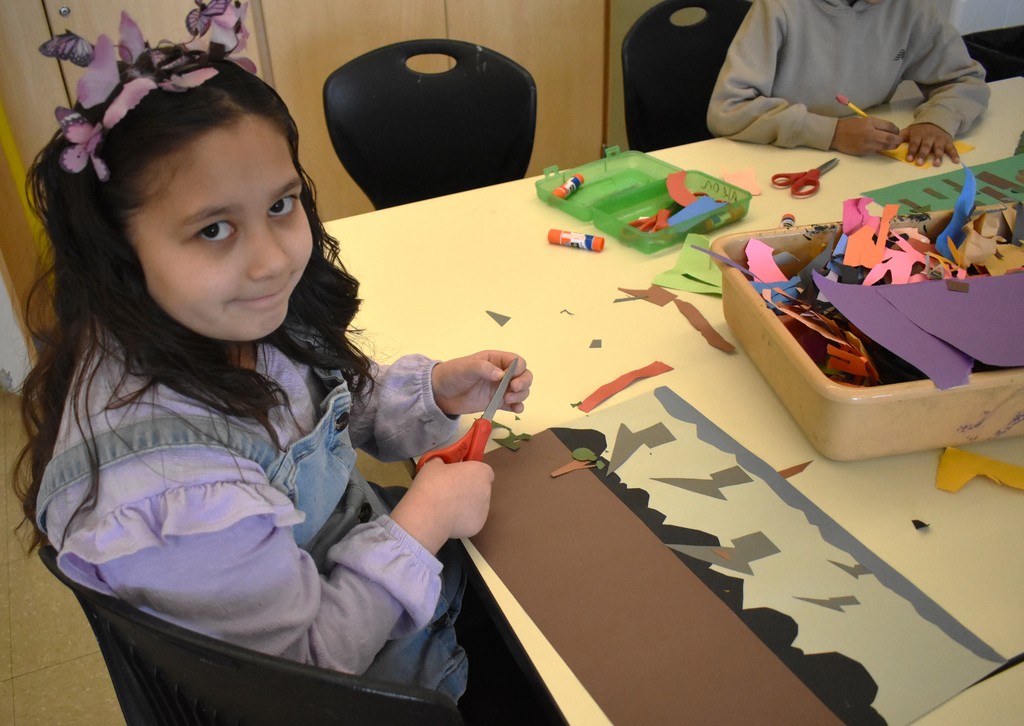
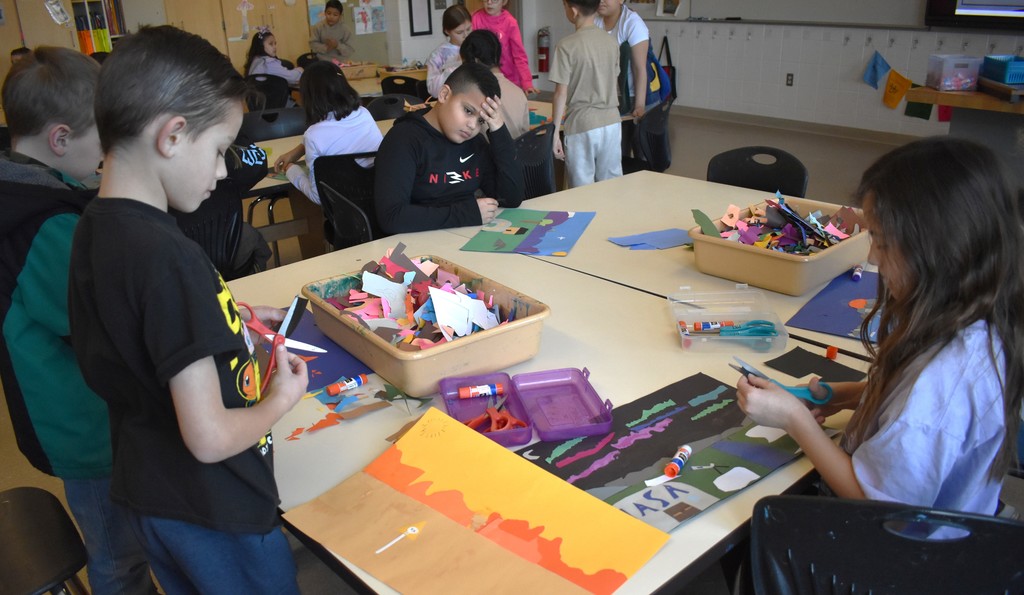


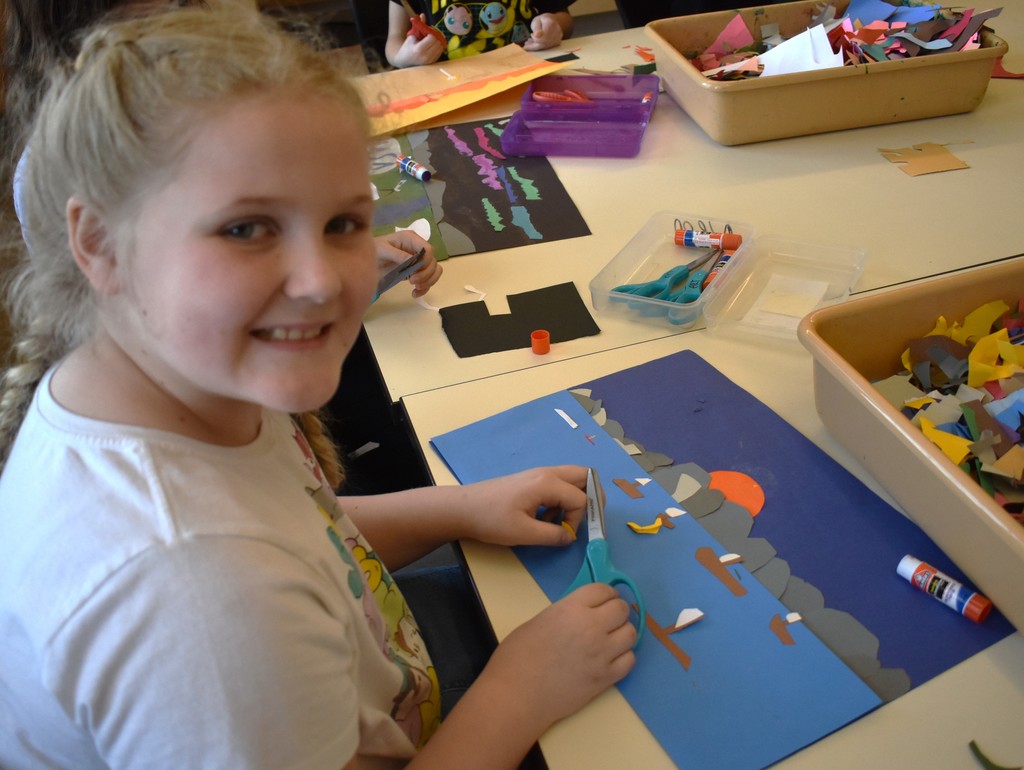
Jessica Kahn’s Otisville kindergarteners recently learned about comparing the capacity of containers by counting and recording the numbers of scoops of blue liquid required to fill each one.
Since they couldn't “see” the scoops once they were poured into the containers, they needed to use the numbers to see which one held more. The students practiced using the terms, “greater than” and “less than” when comparing the numerals (so, 16 is greater than 2 and 2 is less than 10).
Learning "greater than" and "less than" in kindergarten is crucial because it lays the foundation for understanding number relationships, which is a fundamental math skill that allows children to compare quantities, build a strong base for future math concepts like addition and subtraction, and helps them grasp the concept of relative size and value, all while developing important critical thinking skills.
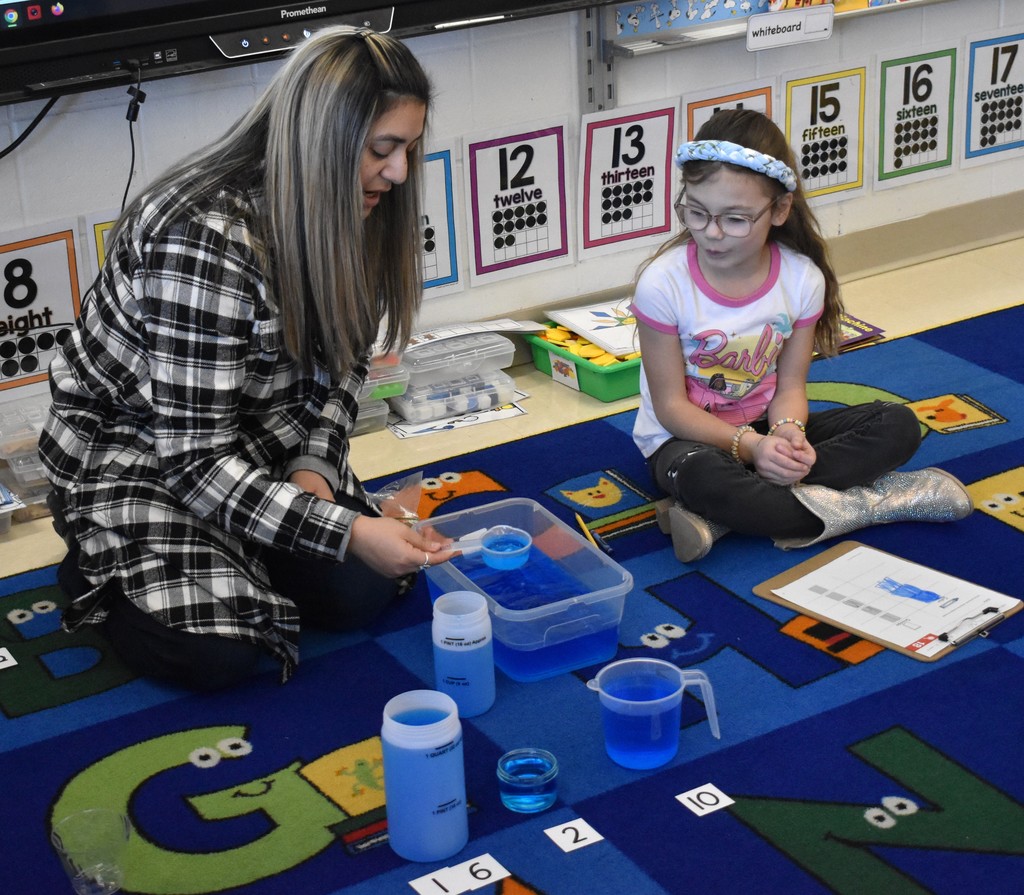

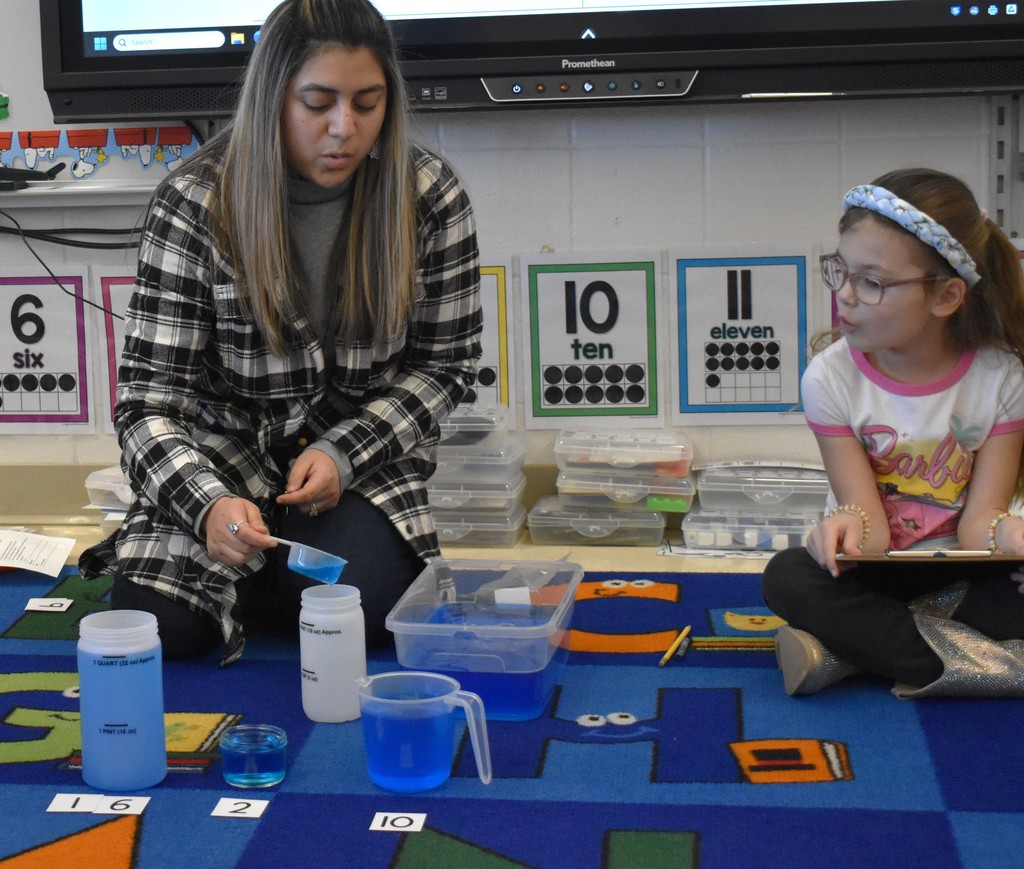

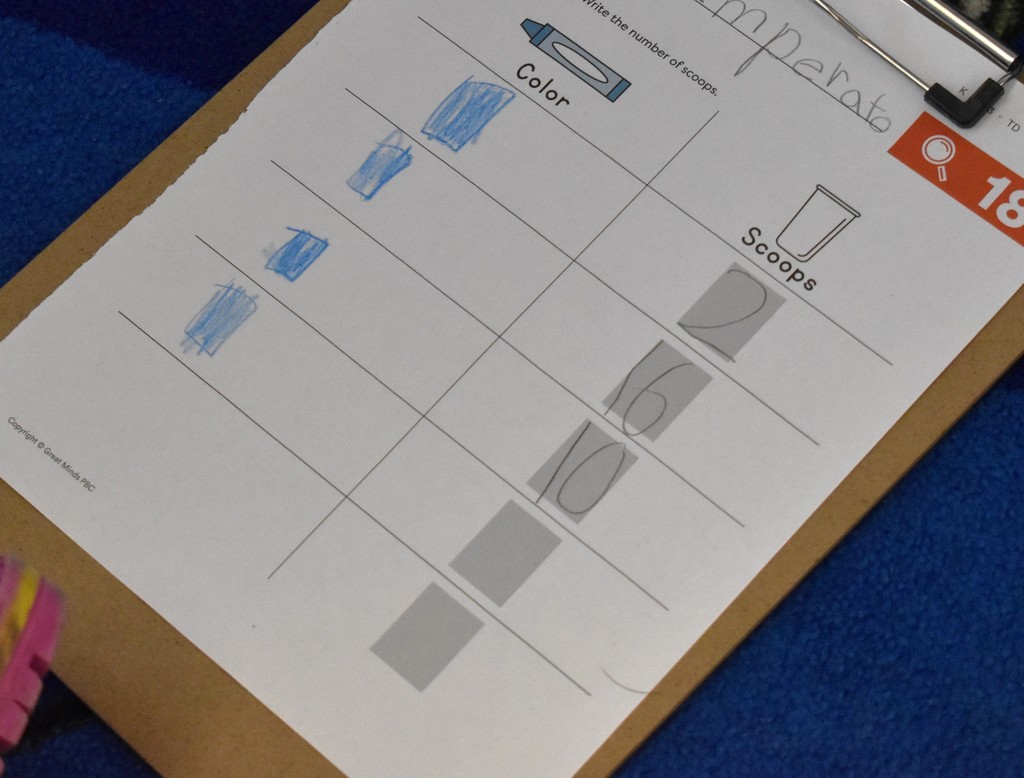
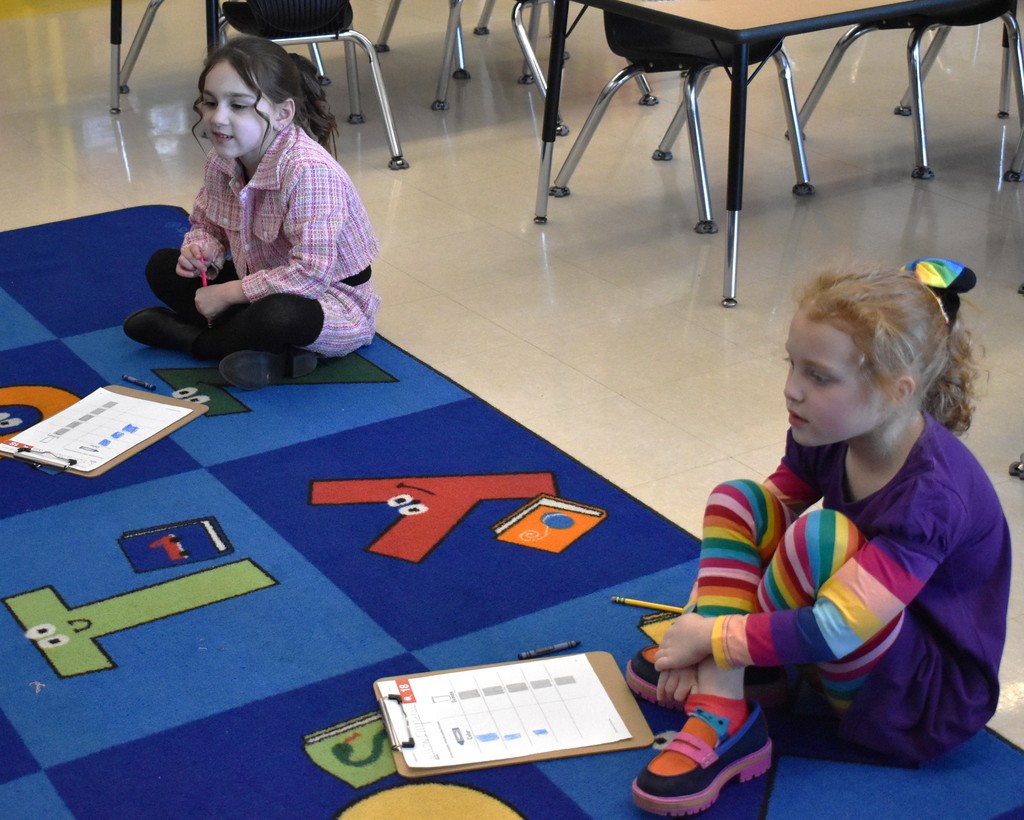
The cast and crew of the Otisville Elementary Drama Club are busy putting final touches on their March 4 and 5 productions of WILLY WONKA KIDS! Take a peek!
Remember, admission is free for everyone! Don't miss out!
"Willy Wonka KIDS" follows enigmatic candy manufacturer Willy Wonka as he stages a contest by hiding golden tickets in five of his scrumptious candy bars. Whomever comes up with these tickets will win a free tour of the Wonka factory, as well as a lifetime supply of candy.
Four of the five winning children are insufferable brats, but the fifth is a likeable young lad named Charlie Bucket, who takes the tour in the company of his equally amiable grandfather. The children must learn to follow Mr. Wonka's rules in the factory — or suffer the consequences!


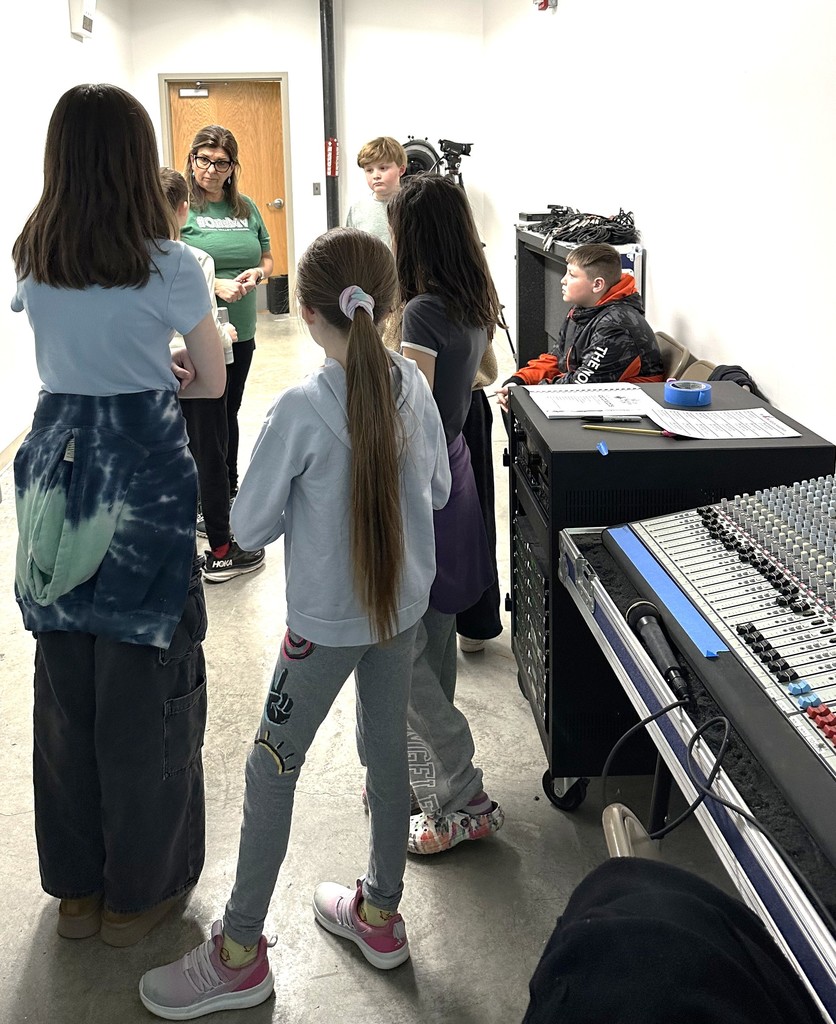

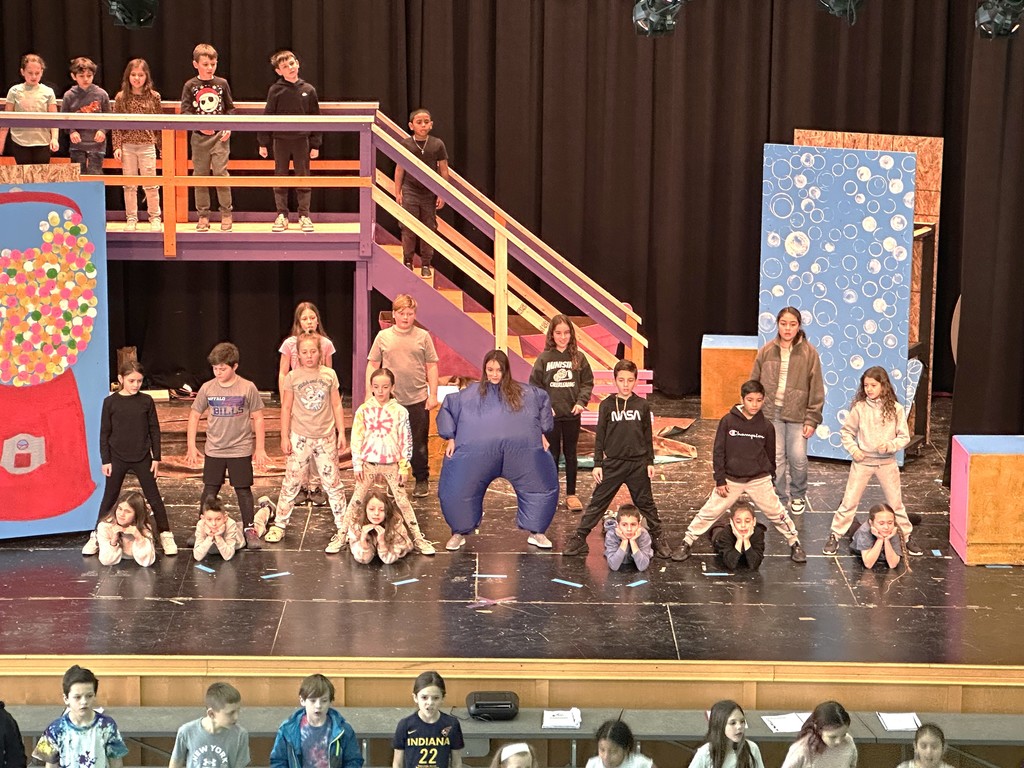


Bailey Riley’s seventh-grade science students, like their peers, are learning about kinetic and potential energy. As part of their studies, students recently completed a lab where they were tasked with observing different factors that affect amounts of energy.
What better way to do this than with tennis, golf and ping pong balls? Students “dropped” these three balls at different heights and observed how much they each bounced. The balls which bounced the most had the most energy.
Studying kinetic and potential energy in seventh-grade science is important because it provides a foundational understanding of how energy exists in different forms, how it can be transferred between objects, and how this concept applies to everyday situations, laying the groundwork for further exploration of more complex physics concepts later on. It helps students grasp the basic idea of energy in motion (kinetic) and stored energy (potential) which are crucial for understanding many natural phenomena around them.
• Kinetic energy is the energy of motion, meaning it's the energy an object has due to its movement
• Potential energy is stored energy that an object has due to its position or arrangement, ready to be released as kinetic energy when conditions change

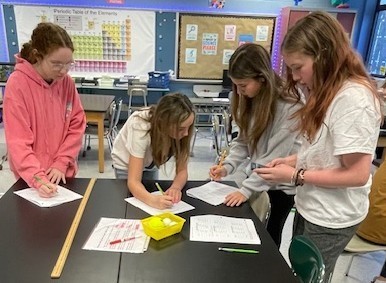

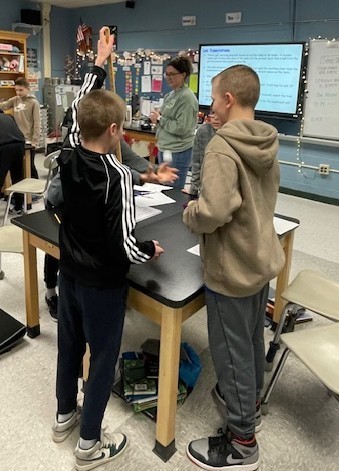

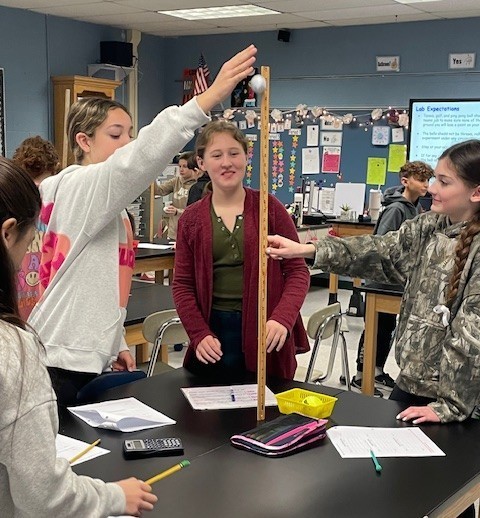
Congratulations and best wishes to members of the senior members of the Varsity Cheer team, who were honored and recognized for their many contributions to the team’s success during their recent Senior Night and Cheer Showcase: Jillian Babcock, Natalie Christiano, Sara Delmar, Cara Durlester, Emma Gutzeit, Kaitlyn Howell and Mia Lockowitz!
Members of the Minisink Youth Cheer program and the team showcased their routines during this gathering!

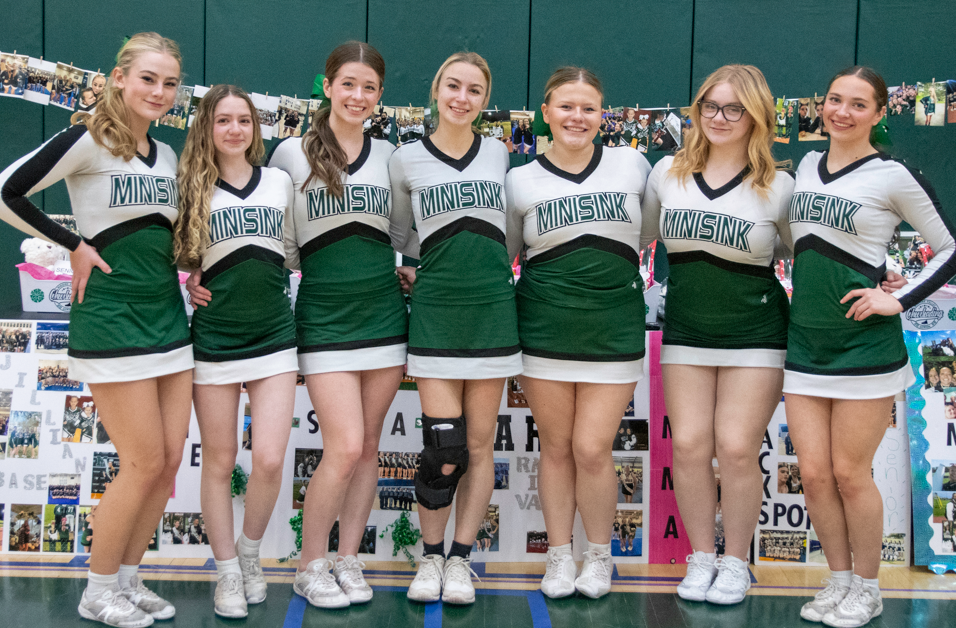


The varsity girls and boys indoor track & field programs capped their invitational season in winning style this past weekend at the Garden State Open, hosted by The Armory Track & Field Center. The teams had nine podium finishers and six event winners in their final tune-up for the Section IX State Qualifier.
Minisink Valley once again drew on the strength of its relays, sweeping the boys' and girls' 4x400 meter relays to close the meet, outdueling Section IX rivals Monroe-Woodbury in both races.
The girls quartet of Zoey Terpak, Kaleigh Murphy, Lyla LaBarbera and Ferrah Hill eased to the win in 4:07.07, good for #1 in the section this season. Not to be outdone, the boys' squad of Benjamin Spevak, Robert LaBarbera, Jon Mausling and Samuel Anderson stormed to victory in a thrilling lean at the tape, establishing a new program record and New York #2 mark of 3:21.02 in the process.
Also earning gold medals for Minisink Valley were Samuel Anderson (:48.75, 400-meter dash), Ella Michelitch (5' 6", high jump), and Delila Kronimus (11' 6") and Logan Schupner (15' 6") in the pole vault.
Tyler Cloidt (11' 6", pole vault) and the girls 4x200 team of Murphy, Chloe Beck, Terpak and Kessler Hirsch earned fifth place medals, while Michelitch nabbed the final podium position in the long jump (16' 3").
The teams now have their eyes set on advancing individual athletes and relay teams to the NYSPHSAA/Federation Championships, with the Section IX State Qualifier to be hosted by The Armory Track & Field Center on Saturday, March 1.

